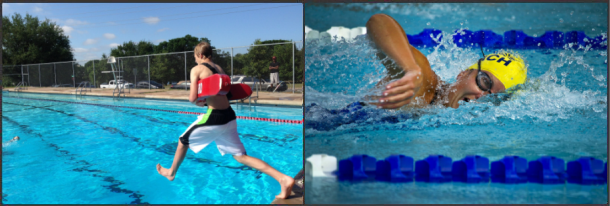Lake Michigan, located in America, is considered one of the most mysterious and dangerous bodies of water.
Lake Michigan (USA)

Similar to the Bermuda Triangle, Lake Michigan has been a spot for air crafts to disappear for unexplainable reasons. It is also quite dangerous because of its sudden forming currents, which cost many their lives.
Jacob’s Well (USA)

Although the water in this well is crystal clear, it hides many caves that people cannot leave alive. The well is 30 feet deep, and although it is known to be very dangerous, some brave souls still try diving in it.
Horseshoe Lake (USA)


The bottom of the lake has a lot of fissures from which carbon dioxide emits. This is deadly for anyone who goes into the lake and for anything surrounding the lake, including trees.
Great Blue Hole (Belize)

As you can see, the Great Blue Hole is a circle surrounded by small pieces of land. This small circle becomes dangerous when tides start forming, which causes it to become a vortex pulling everything from the surface into the abyss.
Rio Tinto (Spain)

The odd orange copper tint of this river comes from years of mining and Fossil excavation. The many years of mining have made the chemical makeup of the river to be highly acidic, containing high levels of iron and heavy metals. Bacteria in the river help oxidize metals giving the river an extra tint of redness. Swimming in this river is not recommended under any circumstance. The red/orange colour is only prominent for about 50 Kilometers of the whole river.
Drake Passage (between South America, Chile and Antarctica)

This passage is between Cape Horn, where the Pacific and the Atlantic Ocean meet, and Antarctica. So as one can imagine, this is horrifying and dangerous for sailors to pass through. The cold conditions and winds from Antarctica, as well as icebergs, are hidden on the surface. The two oceans meet, meaning strong currents, winds, and poor visibility. Waves in this area can get up to 40 feet high.
Boiling Lake (Dominica)

The lake quite literally boils. It is located on top of a fumarole. A fumarole is an opening on the earth’s surface from which hot gases are emitted. The lake can heat up to about 92 degrees with the help of these fumaroles. It is not always that the lake is boiling, as it depends on whether the hot volcanic gases are released. Although the greyish/blue colour of the lake may seem inviting, especially when it is calm, it is very dangerous to step foot in as it may start to boil at any given second.
Blue Hole (Egypt)

The Blue Hole, which is on the coast of the red sea, only a few kilometres north of Dahab in Egypt, is a famous diving spot. This diving spot is only recommended to experienced divers as there is a great danger of passing the underwater tunnel incorrectly, which may be fatal.
The bottom of the hole is over 100 meters deep. Another reason for the death of divers trying this diving spot is nitrogen narcosis. A skill in buoyancy and very controlled descent is needed to manage this dive successfully.
Lake Natron (Tanzania)

Lake Natron has its name since it is a lake covered with a salt crust. The word natron stands for the mineral salt found in dried lake beds. This lake has very high salinity levels and is one of the most alkaline lakes in the world. The water temperature heats up, up to 50 degrees. You would think that life in this lake is impossible, but there are still three types of fish that can survive in it.
Lake Kivu (between Congo and Rwanda)

On first look, this lake may seem pretty normal, even quite idyllic. However, it is the most dangerous lake because of one sole reason: layers of methane and Co2. Just a little rumble from an earthquake can lead to the deaths of people living in and around Kivu.
The vast amounts (55 billion cubic meters) of methane and Co2 have been caused by thousands of years of volcanic activity. The lake is quite warm, and due to the gases, it gets warmer the deeper you swim. However, it is not recommended to plunge into this lake.

(Duck turned into stone on the Natron lake)
These different types of dangerous bodies of water have different reasons why people should stay away and not swim in them. However, it is astonishing how the earth has, over centuries, created such interesting conditions for these bodies of water. Always treat such dangerous waters with respect and research the waters you swim as you never know what lies beneath.
Lifeguard Services
Lifeguard services provide an easy way to hire a fully qualified lifeguard for permanent, short and long-term hire. We provide an easy way to make sure your allocated water is in safe hands. We can come to your school, outdoor event, party and more. To find out more and book please see our booking page.




Leave a Reply